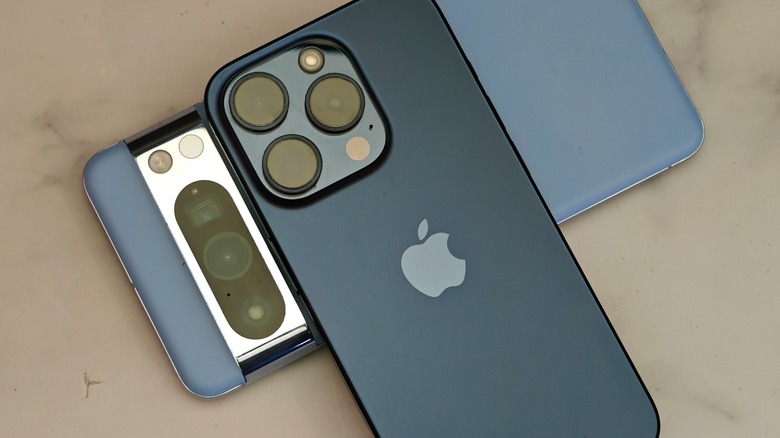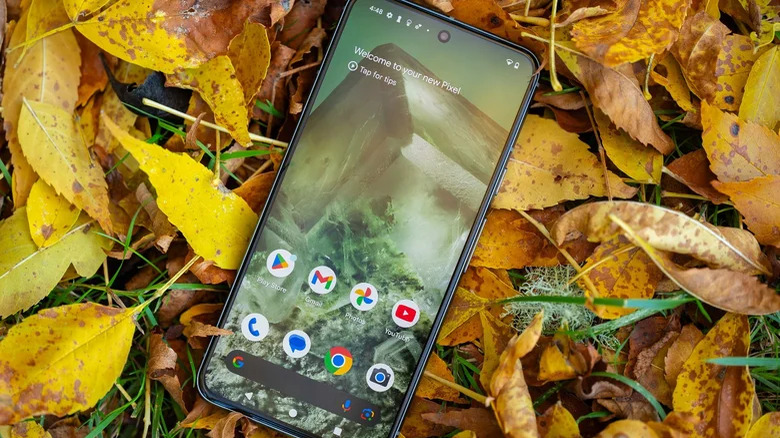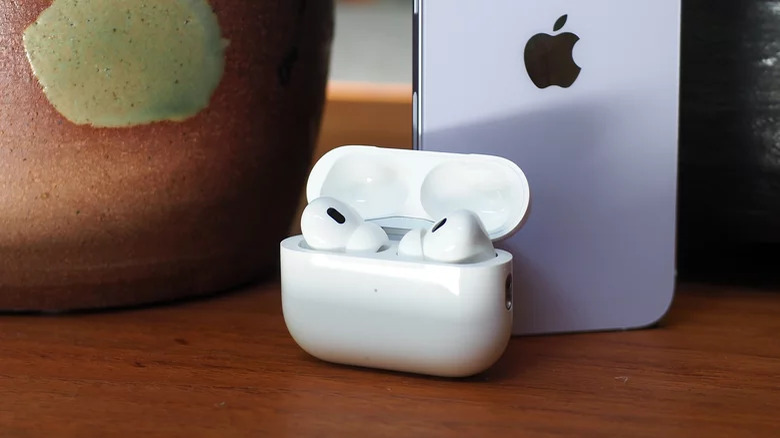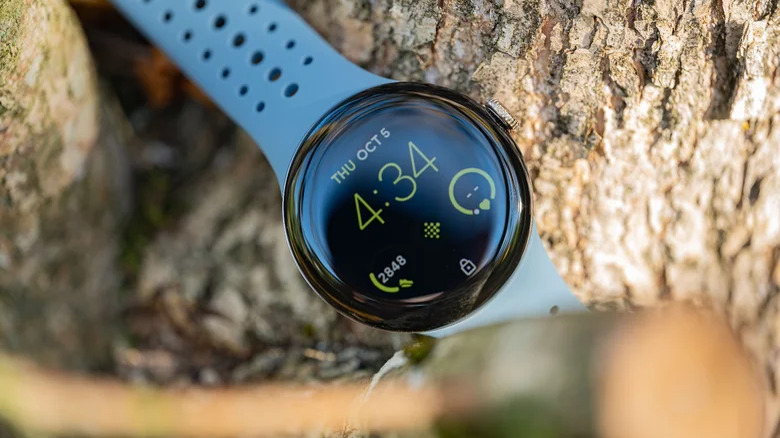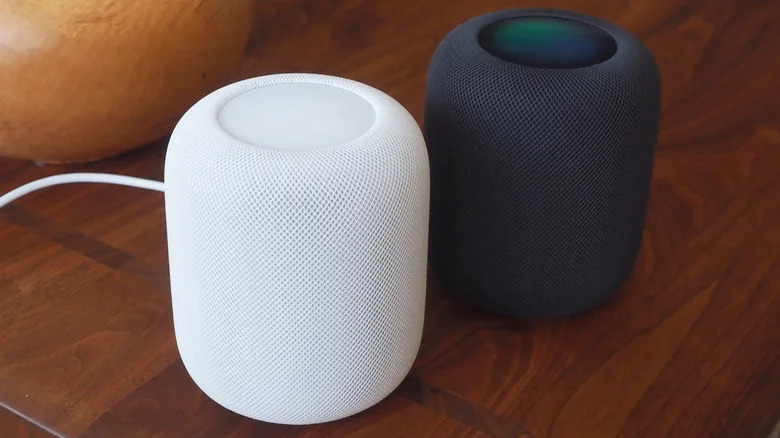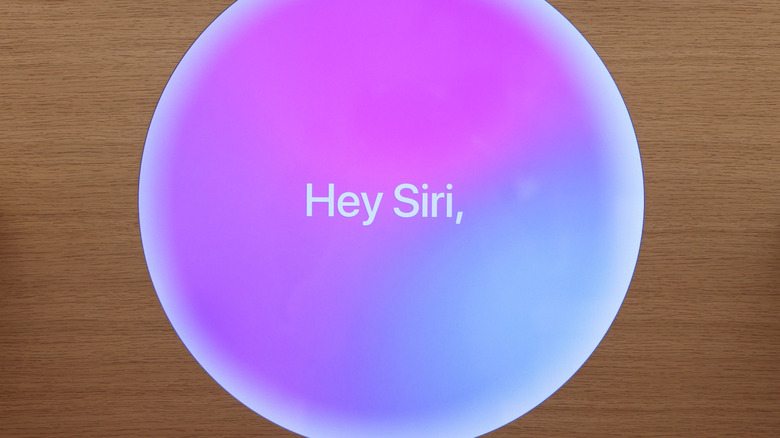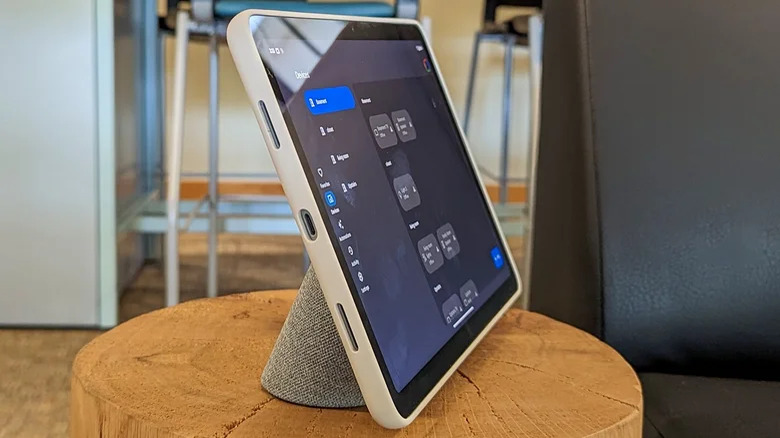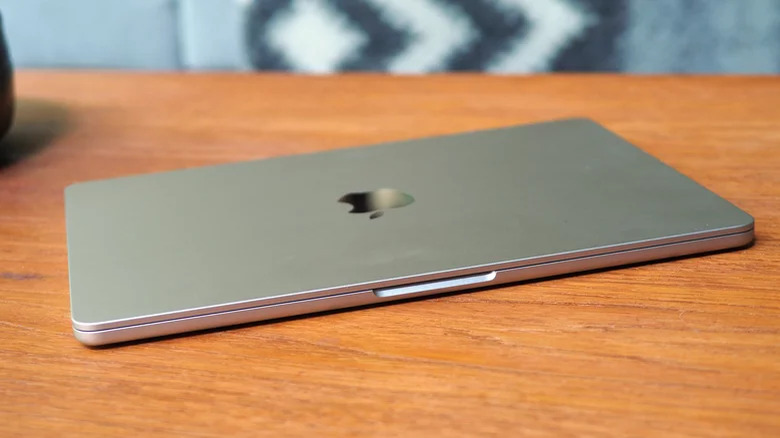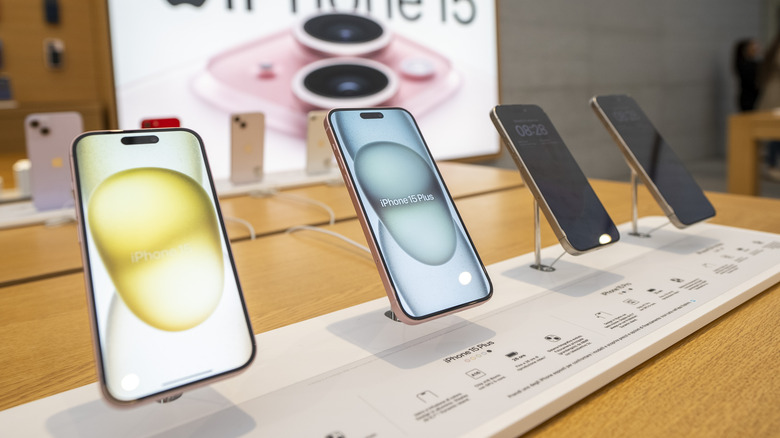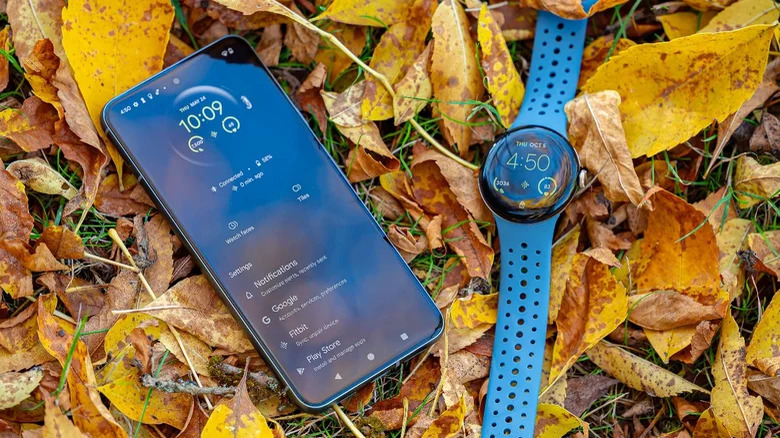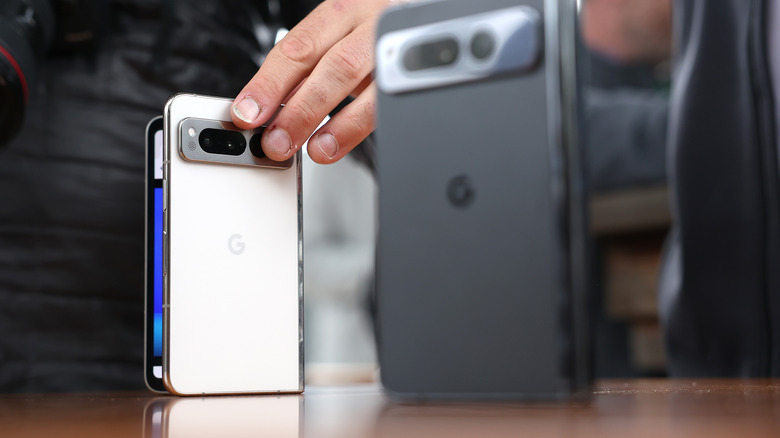iPhone Vs Pixel: Is One Ecosystem Really Better Than The Other?
Within the world of smart devices, things are becoming more interconnected by the day. It's almost a given that there's a device to go with any other device you have, but some brands like to have the entire product range locked down. In terms of having a broad product ecosystem, there are two brands that stand out: Apple and Google.
Both brands' signature offerings, the iPhone and the Pixel are locked in a prolific battle within the realm of mobile devices, even though it's not as long-running as the rivalry between the Samsung Galaxy and the iPhone. Beyond the phones themselves, Apple and Google both offer an enormous, and seemingly ever-expanding range of gadgets that link into both companies' respective ecosystems.
But is either ecosystem really better than the other? What really makes a good ecosystem to begin with? Perhaps for you, it's strictly the ease of connecting each piece of the puzzle together, or maybe you care more about robust customization. No matter what your priorities are, there will be a right answer for you. And that is the most important aspect to consider here — there is no blanket answer. However, the answer for you will depend on what you want out of a product ecosystem.
With that in mind, how does each piece of the respective ecosystems stack up?
Phones
The first piece, and perhaps the most important, is the phone. In Apple's corner, there's the iPhone. Judging by legacy alone, the iPhone surely wins out as not just the most iconic Apple device ever made, but one of the most influential pieces of technology ever.
While you don't buy a phone for its legacy, Apple does bring simplicity and quality to the table. If you prefer a device that you can take out of the box and hit the ground running with, Apple will give you a superior experience on that front. That's not to say that the iPhone slouches in the spec department either. The new iPhone 15 Pro is one of the most powerful smartphones on the market, with the device even having some unbelievable gaming capabilities for a smartphone.
Opposing the iPhone is the Google Pixel. While Apple's product range includes the base model iPhones and the pro counterparts, Google has a slightly more diverse lineup. The Google Pixel lineup includes the standard Pixel and its variants, as well as the Google Pixel Fold. The folding device gives Google a particular edge here as product diversity goes, as Apple has yet to make a foldable.
Simply comparing the current base model from each company, the Google Pixel 8 and the iPhone 15, it's hard to pick a decisive winner. However, one determinant factor may be the refresh rate. While it might not be a big deal to you, Apple's choice to not embrace a high refresh rate on its base iPhone is emblematic of its broader tendency to wait to implement certain features. If you prefer to be on the bleeding edge of features, the Pixel will be your better bet with its new AI functions.
Earbuds
One of the smallest steps further into either ecosystem, beyond just the phone, is a set of wireless earbuds. Ever since Apple launched the iPhone 7, the headphone jack has gone the way of the dodo. While USB-C and lightning-enabled earbuds do exist, wireless headphones offer the convenience of being wireless, in addition to being able to plug in your phone while listening to something. With both companies' mobile offerings lacking a 3.5-millimeter jack, they both offer wireless alternatives.
On Apple's end is the AirPods, which have become something of an icon in the world of wireless earbuds. While many companies have abandoned the stemmed earbud of yore, Apple's AirPods have kept the stem as a steadfast piece of its design. While the Airpods were judged for their unusual appearance at the time they were released, the earbuds have since become an iconic product. The AirPod family has grown to include the standard pods, as well as the more advanced AirPod Pros and the larger, over-ear AirPod Maxs.
In Google's corner, there are the Google Pixel Buds. From a pure looks standpoint, the Pixel Buds are the more appealing of the two. However, looks aren't everything. When it comes down to wireless earbuds, the most important things are all inside the shell. When it comes to superior features, battery life, and overall sound quality, the AirPods have the Pixel Buds beat.
Smartwatches
Smartwatches have become one of the first truly quintessential pieces of wearable smart technology over the past decade, and for a majority of that time, Apple has dominated that market with the Apple Watch, however, the competition has arrived in much bolder fashion as of late for Apple. Recently, both Apple and Google released new smartwatch lineup iterations.
Apple's newest releases come in the form of the Apple Watch Series 9 and the Apple Watch Ultra 2. There are some bonus points to throw Apple's way for having the more outdoor-oriented Ultra option, but the company's true main event is the Series 9. The Series 9 is a fine update on a very iterative line of products. Despite having been around for nearly a decade, the Apple Watch has not changed that much in that time from a pure look standpoint. There have been minor upgrades and updates over the years, but nothing truly earth-shattering.
Google's latest release into the smartwatch market is the Google Pixel Watch 2. While the first Pixel Watch can safely be described as "almost there," the Pixel Watch 2 shipped with some improvements that make it much more on par with, and in some ways better, Apple's offering. For example, the Pixel Watch 2 is IP68 waterproof, whereas the Apple Watch Series 9 holds an IP6X rating for dust resistance.
Ultimately, the case between both watches comes down to the phone in your pocket. If you own an iPhone, you'll almost definitely have a better time with the Apple Watch. If you don't own an iPhone, the Apple Watch might not be for you.
Smart speakers
When it comes to getting really wired into the Apple or Google ecosystem, one product that they don't have any other major competitors in the field for is smart speakers. While Amazon's Alexa may have been the early bird, Google and Apple have caught up, and have a huge product range to entice users to stay within both companies' respective ecosystems.
Apple's smart speaker range includes the Apple HomePod and the Apple HomePod Mini. The latest HomePod is a larger speaker with great sound quality, if not just a little expensive. Perhaps the biggest drawback to Apple's HomePod is using a music service that isn't Apple's. If you don't use Apple Music, the Apple HomePod can be a tedious experience for playing music. For those plugged into Apple's hardware and software, the HomePod can be truly great.
The smart speaker range offered by Google has the advantage over Apple with a slightly more diverse array of offerings that includes the Google Nest Audio, the Google Nest Mini, and the video-enabled Google Nest Hub and Nest Hub Max. On the whole, this entire range is much more robust than what Apple has to offer with the two different HomePods.
In the realm of smart speakers, Google sits on top, even if you're already pretty deep into Apple's ecosystem. With cheaper speakers and a better experience for using a non-Apple music service, it's not hard to pick Google's Nest line.
Virtual assistants
Virtual assistants have become a huge part of day-to-day life with smart devices. Since Apple made Siri an onboard feature of the iPhone starting with the iPhone 4S, the virtual assistant race has steadily picked up. Unfortunately for Apple, they have been left in the dust with regard to virtual assistants.
Siri has been around on the iPhone since 2011, and while it has improved over time, there are still some glaring issues that Siri possesses. In terms of basic conversation and looking up info for users, Siri lags behind almost every major competitor. While Apple may be looking to experiment with generative AI to beef up Siri, as things currently stand, Siri just simply lacks many of the truly great features held by other virtual assistants.
The shortcomings of Siri are most obvious when held up against Google Assistant. Overall, Google Assistant holds up as far more robust and responsive. Perhaps the most important aspect here is that Google Assistant is much more likely to know what you're talking about without any need to back up and rephrase what you said, like you may find yourself doing with Siri.
Of course, there is a convenience factor to both virtual assistants, as Google Assistant comes pre-loaded on a great deal of Android devices, while Siri is included with Apple devices. While it is possible to make Siri let you speak to Google Assistant, it's not exactly straightforward.
Tablets
While both Google and Apple do make tablets, it feels almost unfair to compare the two. Apple has been making tablets for nearly fifteen years, with numerous iterations of the iPad available. Meanwhile, Google just broke into the market with the Google Pixel Tablet.
To be fair, the Google Pixel Tablet is fantastic for what it is. The tablet launched with great app support, has a fantastic display, and comes with a charging dock that doubles as a speaker (though this can be pricy). With the dock in particular, you can make a Google Pixel Tablet a mobile replacement for a Google Nest Hub. At $499, there's only one true concern with the device, that being a disappointing 60 Hz refresh rate.
However, there is a good reason for how long the iPad has been around. Apple's tablet lineup has a few clear iterations, between the mainline iPad, the iPad Air, the iPad Pro, and the iPad Mini. All four offer great performance for various needs, and the 2022 iPad can particularly offer the same level of performance for $50 less than the Google Pixel Tablet.
While it's hard to say which exact tablet will be best for you, Apple excels in variety. There's only one Google Pixel Tablet for every user possible, while there are four different iPads to fit the various needs of various users.
Laptops
It's perhaps also unfair to compare Google and Apple's laptops. Apple, after all, has been in the business of making computers and laptops since its inception. The MacBook is an icon in mobile computing and would be hard for any manufacturer to stand up to in terms of sheer power and popularity.
Apple's laptop quality has especially boosted of late with the M1 and M2 MacBooks which have shown incomparable quality in the world of laptops. The MacBook Air M2, for example, has an impressive battery life and a wonderful display all packed up with the power of Apple's M2 chipset. While there are some minor downsides to it, the most significant mark against the MacBook is its high price point.
Until last year, Google did have a line of laptops in the Google Pixelbook and the Google Pixelbook Go. Even if this line of laptops wasn't discontinued, there's still a pile of problems that the Pixelbook faced that made it hard to pick over a MacBook. The largest of these issues is ChromeOS. On a hardware end, the Pixelbook is great for the most part with a solid construction and good specs at the various price tiers. However, all of that is wasted on ChromeOS.
No matter what positives the Pixelbook has (and there are plenty), the laptops will be perpetually held back by ChromeOS. What's worse, the MacBook is a significantly better, and still existent product.
Interconnectivity
How do both ecosystems hold up in terms of connectivity and compatibility with one another? The answer to that question is a little more complicated than it might first appear. Both product ecosystems have great connectivity but for very different reasons.
When it comes down to it, every Apple device will play nice with every other Apple device. That simplicity is Apple's biggest strength, and there's no thinking to be done when considering compatibility. If Apple makes it, it will work with any other Apple product, and that peace of mind is unbeatable. The issues only start to arise the moment you begin to step outside of Apple's ecosystem.
Apple's products, as nice as they can be to one another, are nightmarish to use with non-Apple products. For example, the Apple Watch becomes a glorified paperweight without an iPhone. Yes, you can still use the basic functions of the watch without an iPhone, but all of those great connectivity features will inevitably go to waste, as an Apple Watch will not connect to any Android phone.
The Pixel ecosystem shines thanks to the ability to have a truly interconnective experience. With the smartwatch example, you don't strictly need a Google Pixel to use the Pixel Watch. While it won't work with an iPhone, it will work with any other Android phone, permitted that it's up to a certain point OS-wise. This crosses over for a majority of the Pixel products; they will all work well with one another and any other Android device. In some cases, such as Google Assistant, you can even use the product with an iPhone.
Ease of use
Closely connected to the idea of connectivity is ease of use. Your devices can communicate as much as they want, but if it isn't an intuitive experience, things can quickly go off the rails. While Google's devices may have the game in terms of interconnectivity and compatibility, Apple's ecosystem wins the day for simplicity.
While the closed-off nature of Apple's ecosystem can be a huge downside, one tremendous upside is that it ensures that all devices can have a streamlined setup within the ecosystem. AirPods, for example, only need to be held up to an iPhone to pair. Still with the AirPods, they can seamlessly switch between Apple products depending on what you're actively using at any given time. While Google's devices can still be easy to pair with one another, they are nowhere near as intuitively connected as Apple's devices.
All of that said, there are hiccups on Apple's side. One previously mentioned example is using any non-Apple music service on the Apple HomePod. While it is possible, it's nowhere near as simple as using Apple Music. For easily keeping a toe outside of the ecosystem, Google will be far kinder to certain non-Google products.
Verdict
Between the iPhone and Pixel ecosystem, the winner will all come down to your product preferences. If you prefer the iPhone, you'll probably stick with the rest of Apple's offerings and vice versa. If you like the idea of being able to pick and choose which products you'll have within the ecosystem, while keeping others outside of it, the Google Pixel ecosystem will give you a much easier time for doing so.
From a product quality perspective, Apple earns a slight for having some of the best-in-class products for multiple different categories that Google simply can't stand up to. That's not to say Google doesn't offer great products, as devices like the Google Pixel 8 and the Pixel Watch 2 offer some truly great competition between one another.
Ultimately, the better ecosystem will always be a question of personal choice. Whether the Apple or Google ecosystem is better for you will be determined by what you want out of an ecosystem.
